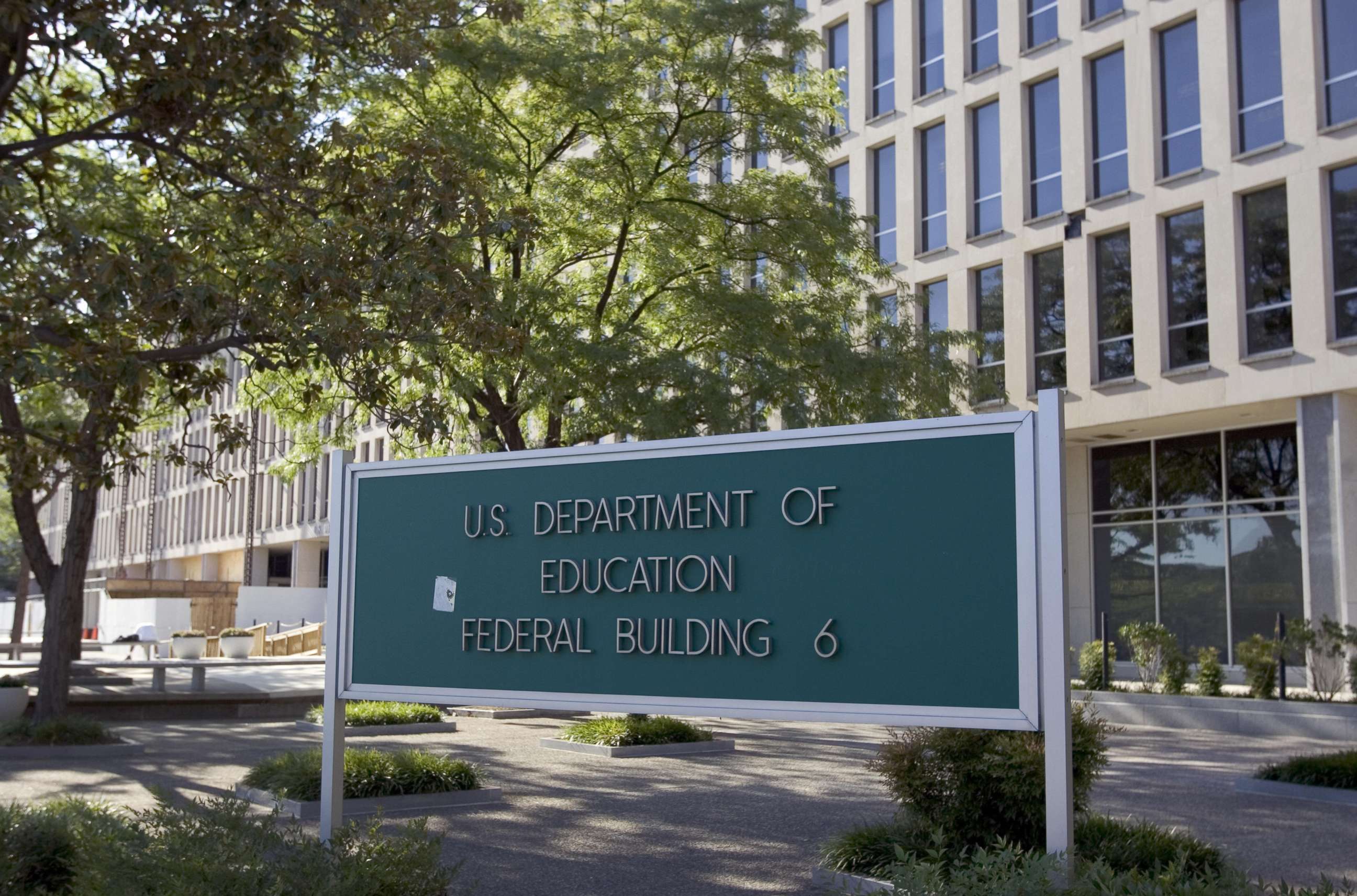White House wants to merge Education, Labor Departments: 'When everybody is in charge, nobody is in charge'
OMB officials acknowledged the plan "will not be implemented overnight."
Call it a Throwback Thursday.
In a move that hearkens back to 1995, the Trump White House Thursday proposed merging the federal Departments of Education and Labor.
"They're doing the same thing," Office of Management and Budget Director Mick Mulvaney said of the two existing departments at a Cabinet meeting Thursday afternoon. "Trying to get people ready for the workforce, sometimes it's education, sometimes it's vocational training – but all doing the same thing, so why not put them in the same place?"
"When everybody is in charge, nobody is in charge," he continued. "Solve that by putting Ed and Labor together and making them responsible and accountable."
According to the proposal, a newly-created "Department of Education and the Workforce (DEW)" would "meet the needs of all American students and workers, from early childhood education to retirement," planning documents said.
Under the Clinton administration, in 1995, Republican lawmakers also proposed merging the two Departments into a "Department of Education and Employment."
At the time, the plan's champion, Rep. Steve Gunderson, R-Wis., testified that the move would transform an "outdated, bureaucratic dinosaur characterized by incoherence and inefficiency" into an agency "as prepared as possible to meet the challenges of the modem workplace."
A government report released that year estimated the new agency would have a budget of $71 billion and employ more than 25,000 people.
Just as in 1995, the restructuring proposed by the White House on Thursday would require congressional approval, and given the current political climate, it remains to be seen whether lawmakers are ready to prioritize the issue.
On a call with reporters, OMB officials acknowledged that the proposal "will not be implemented overnight," calling it "an art of the possible exercise" designed to spark dialogue.

The Republican chair of the House Committee on Education & the Workforce praised the administration's "focus on education and workforce issues together."
"The proposed Department of Education and the Workforce is recognition of the clear relationship between education policy at every level and the needs of the growing American workforce," Rep. Virginia Foxx, R-N.C., said in a statement. "We look forward to working with the administration on the proposal."
The committee's Democratic ranking member, however, called the plan a "hastily concocted proposal that uses the false promise of 'streamlining' to cut investments in our future."
"There is no evidence that merging the Departments of Labor and Education would strengthen the performance of these agencies or produce better outcomes for students and workers. The Department of Labor is no more equipped to oversee elementary education policy than the Department of Education is prepared to enforce standards for coal mine safety," Bobby Scott, D-Va., said in a statement. "The logic behind this proposal is painfully thin."

But the administration points to the very existence of the congressional committee – which oversees both education and labor – as a strong argument for the merger.
"The oversight in Congress is already in one jurisdiction," OMB Deputy Director for Management Margaret Weichert said on a press call. "The goal isn't to downgrade any of the major missions of the two organizations, but really integrate, and frankly, upgrade."
The National Education Association, the nation's largest professional association representing education workers, slammed the proposal as a "radical merger" that is "at best ill-conceived and poorly timed and at worst are an attempt to distract the American public from the humanitarian crisis" at the border.
The proposed DOL/DOE combination is part of a broader government reorganization effort that will also condense food safety authority, currently in the jurisdiction of both the Department of Agriculture and Food and Drug Administration into a single agency.
It was not immediately clear who would lead the new combined Education and Labor department.
Secretary Betsy DeVos, who now leads the Education Department, said in a statement, "Artificial barriers between education and workforce programs have existed for far too long...This proposal will make the federal government more responsive to the full range of needs faced by American students, workers, and schools."
Representatives for Secretary Alexander Acosta, currently at the helm of the Labor Department, did not immediately respond to an ABC News request for comment.
Weichert reassured those currently employed at both departments that the proposal was "not an attempt to cut jobs," but acknowledged that such a move "may, in fact, dislocate employees."
ABC News' Felisa Fine contributed to this report.




